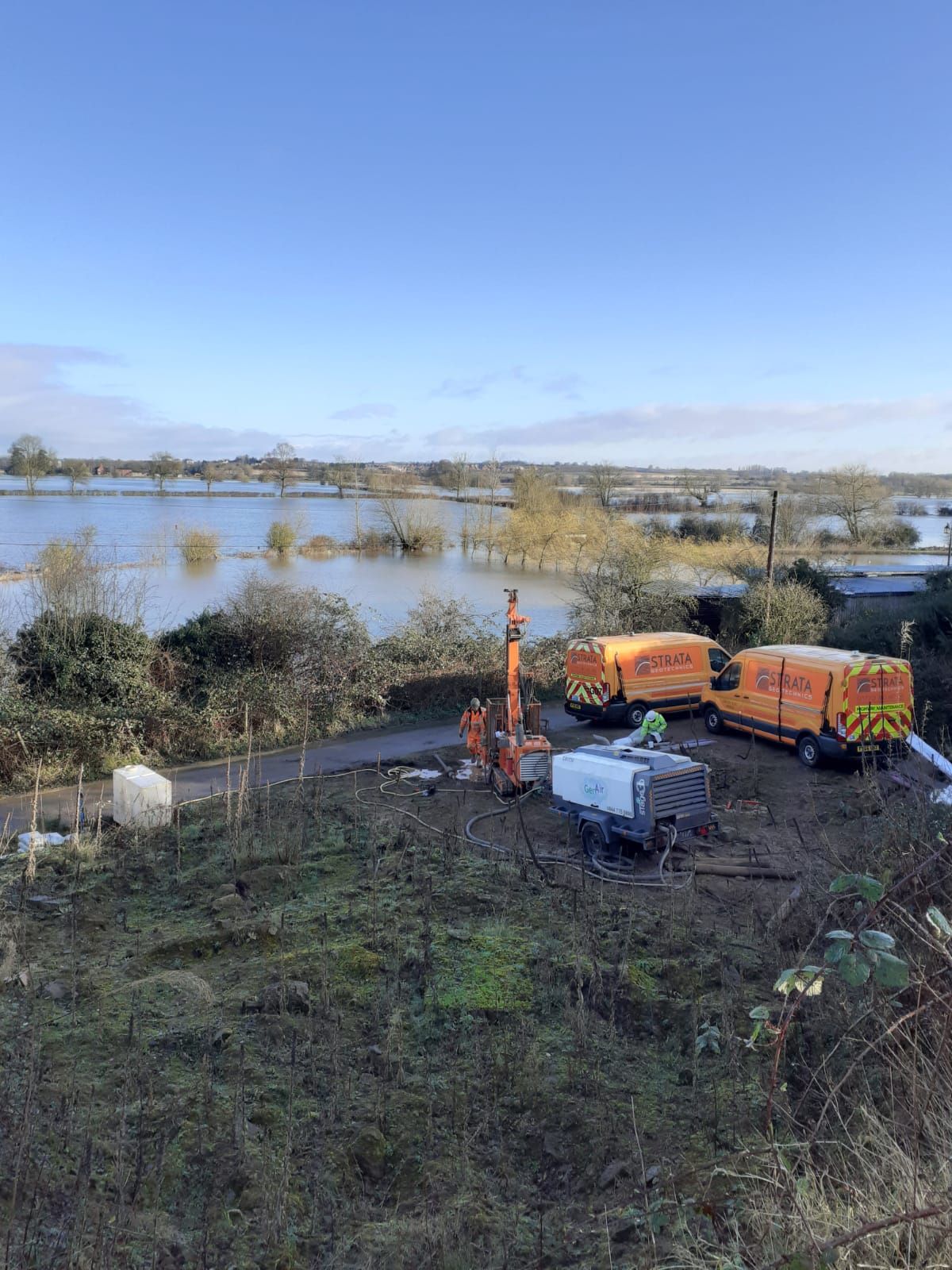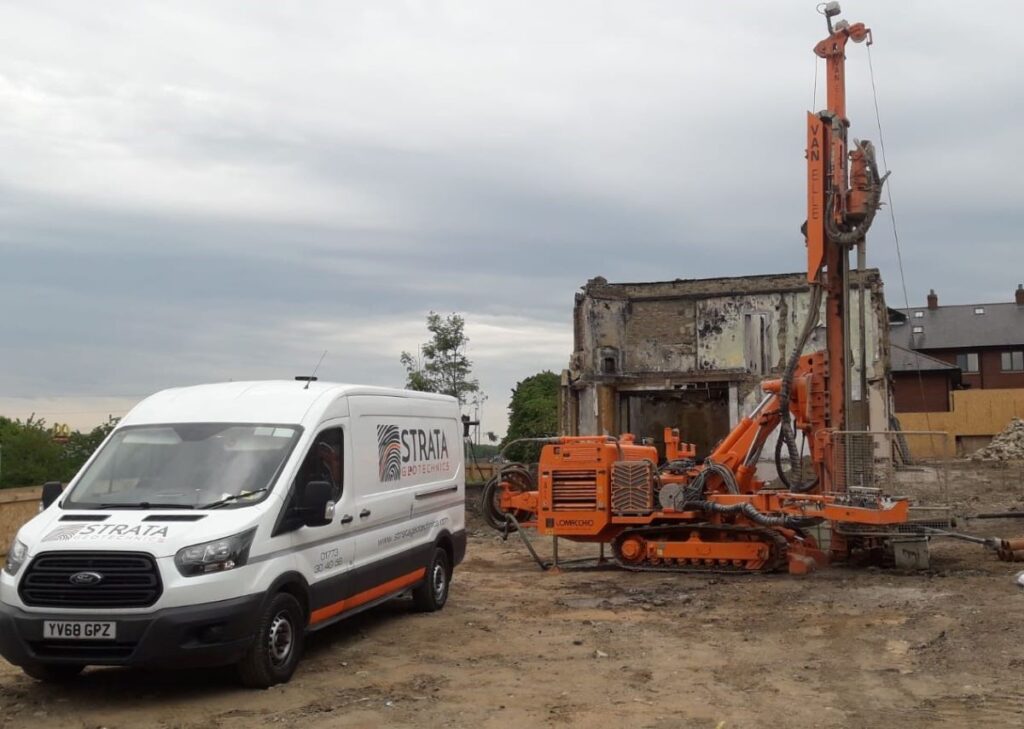Rotary Sonic drilling is an advanced drilling technique used during site investigations.
Rotary Sonic drilling is a technique that significantly reduces friction on the drill, subsequently making penetrating a large range of soils much easier.
This method of drilling uses high frequency resonance. A vibrating head is rotated via the drill string resulting in a high frequency resonance. This creates a powerful force to displace subsurface materials.
Within this sonic head are two rotating counterweights that produce a large amount of vibratory force. This becomes the resonance energy needed for the sonic drill to penetrate subsurface materials and recover samples.
The casing is advanced over the core barrel to maintain the integrity of the borehole. A relatively undisturbed, high-quality sample is retained in a liner within the core barrel.
Strata has a reputation for investing in innovative technologies and have the capability to use the latest rotary sonic technology. This enables one rig to drill both superficial deposits and rock with an equivalence in capability and sample recovery as that from the traditional combined Cable Percussion drilling through the superficial deposits with Rotary Core follow-on into the bedrock. The drilling of the superficial deposits can be quicker and there is no need to mobilise two rigs to site or re-setup over boreholes.
Additionally, our rigs have a dual head, one being the sonic head and the other a traditional rotary drilling head. Once the superficial deposits have been sampled and ‘cased off’ using sonic drilling the rotary head can be traversed over the borehole and the hole continued using traditional rotary drilling or Geobore wireline coring.
We provide an extensive range of ground investigation services. In order to discuss our services in more detail, please contact our specialist Stata Geotechnics team.

